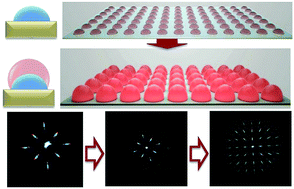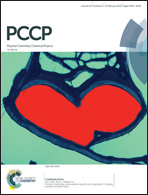Formation, growth and applications of femtoliter droplets on a microlens
Abstract
Formation and growth of femtoliter droplets on surface microstructures are important in many fundamental and practical interfacial processes, such as water collection, vapour condensation in cooling devices, drop self-removal on anti-icing surfaces and fabrication of droplet-templated functional microstructures. In this work, we experimentally and theoretically investigate the growth of femtoliter oil-like liquid on the microlens surrounded by a hydrophilic planar area. The droplets were produced by solvent exchange, a process where the droplets nucleate and grow from an oversaturation created by displacing a good solvent by a poor solvent of the droplet liquid. Our results showed that the droplet fully coats the lens surface and the contact angle of the droplet relative to the flat surface is finely tuned over a large range by the droplet volume. The growth of the droplet on a microlens is largely described by the constant contact radius model. To demonstrate the new opportunities provided by the controlled formation of the droplet situated on a microlens, we will show a simple and effective approach for production of arrays of composite microlenses consisting of two types of polymers with different refractive indices. A high curvature of the composite microlens results in desirable diffraction patterns with potential application for enhanced light harvesting. Moreover, we demonstrate that extraction of traces of a hydrophobic solute from the flow is much faster as the droplet is lifted up from the channel wall by the microlens, promising a time effective in situ detection process in narrow channels.



 Please wait while we load your content...
Please wait while we load your content...